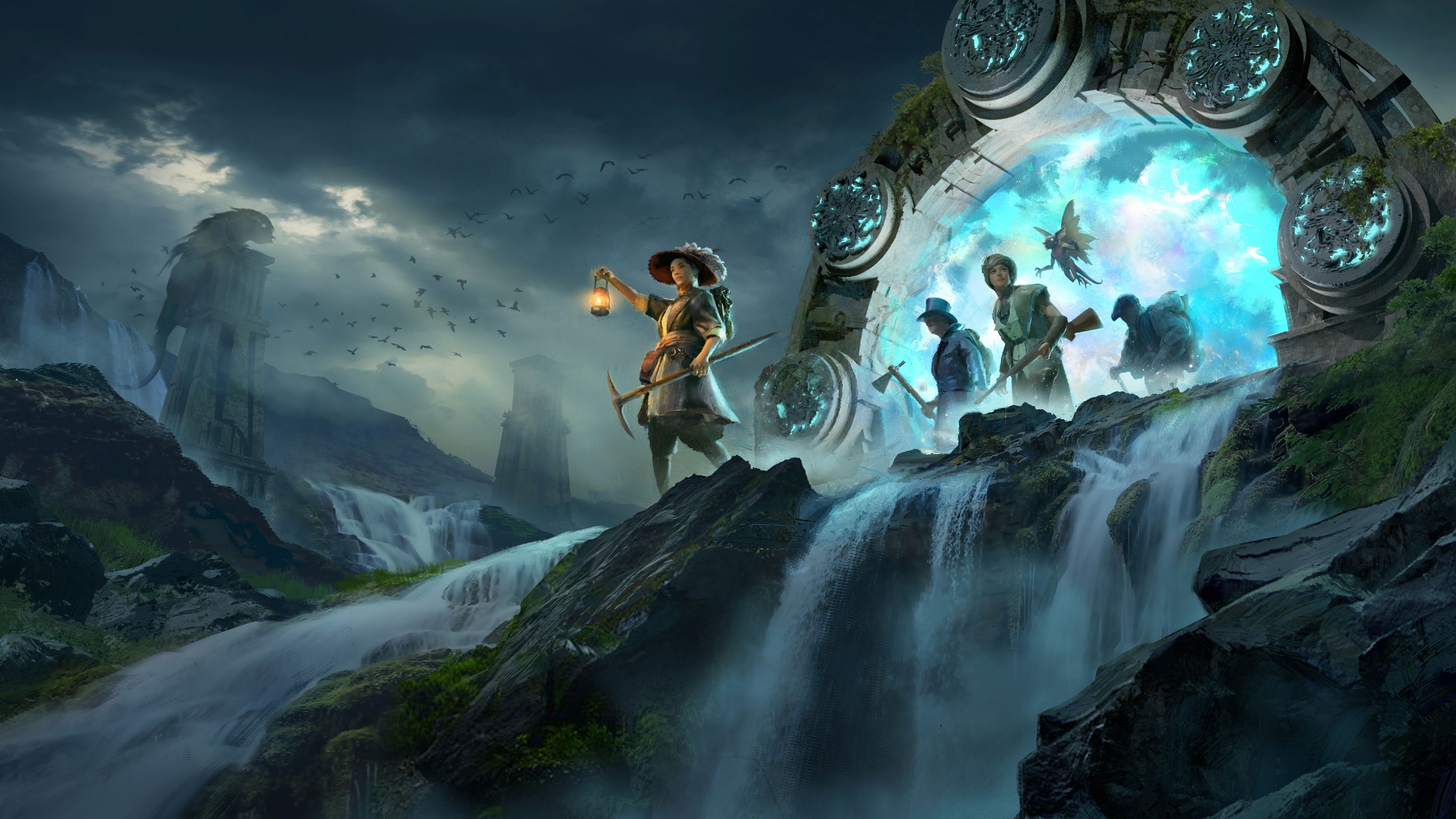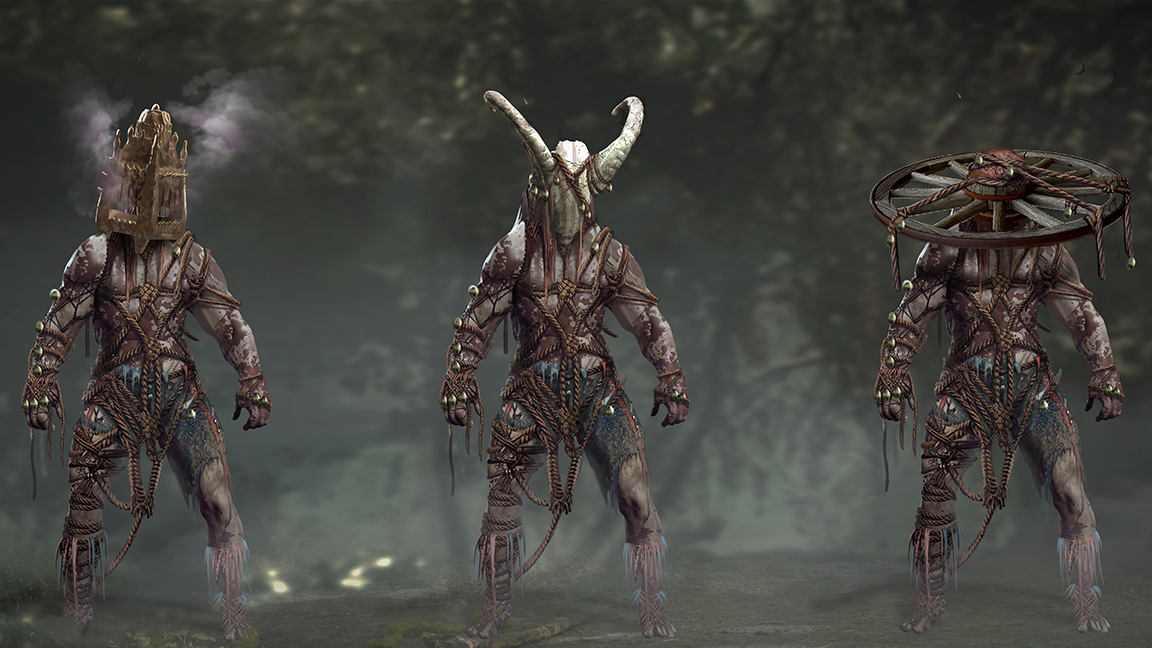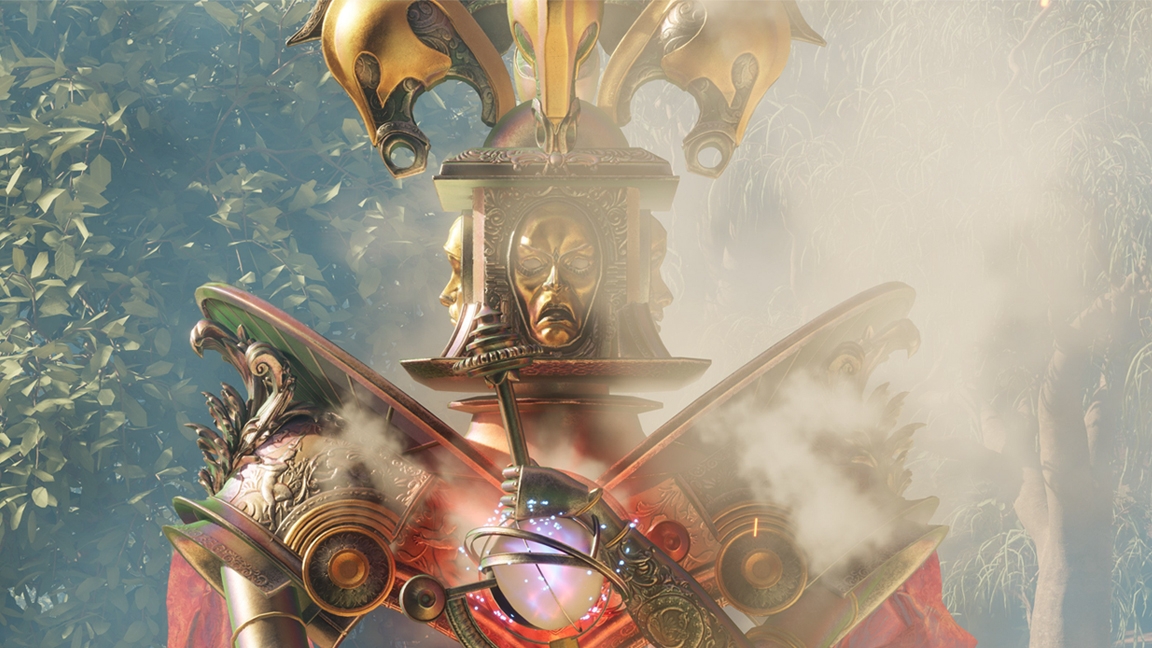
Recent game art and graphics tech has boasted about upping the realism to deliver more authentic worlds and digital doubles. We've seen impressive things made in Unreal Engine 5, and the race to create hyperrealistic game worlds has always been a Holy Grail of the industry. But it's not always the best option; there's still room for games like Nightingale, adventures that take players deep into creative, stylised worlds.
"Game art direction can be a curious beast," says Neil Thompson teasingly. The Nightingale art director tells me the team at Inflexion Games purposefully bucked the current tech-focused trends to instead create a game that ditches hyperrealism in favour of a stylised 'fantasy gaslamp' aesthetic.
"We didn't want to try and get into that arms race, particularly around the character side of things, because trying to do photo real humans digitally is such a difficult thing to do," says Neil, adding: "We see movies trying to achieve this all the time and there's always something slightly off no matter how much money you spend."
Crafting realistic fantasy worlds

The aim of Neil's art team was to create a "realistic world", and by this he means a game world that reacts in a truthful way, and feels believable to exist within. This is no mean feat given the game's pitch: Nightingale is a shared-world survival crafting fantasy game, set in a Mary Poppins meets Wizard of Oz universe where players can craft their own versions of the game's Fae Realms using Realm Cards – players combine cards to procedurally generate new worlds to explore.
"When I say realistic, I mean we're very concerned with how light falls on surfaces," shares Neil, who explains how using Unreal Engine 5's physically based renderer to create realistic light and colour offers a platform from which the art team can go wild.
He explains: "If you scan colours from the real world, and create light sources with the appropriate intensity from the real world, you can get a much more realistic effect. Then what happens, if you follow that pipeline, right down the chain, then anything you put in the world, if it is appropriately created with real world values and [using] a consistent technical art pipeline, things will sit better in the world regardless of their aesthetic style."

The team worked on creating a pipeline that ensured rock, cloth, grass and other materials looked realistic. So when the characters were designed to be more stylised, a little angular, a bit sharper, less photo real, they still feel real. "The skin looks like skin and responds like skin should," says Neil. "When you put these in a more realistic world, it doesn't seem out of place, It just seems like a consistent, credible world that we've created."
In some ways, the need to create a baseline for believability was even more important on Nightingale because it's fantasy world, the Fae Realms, can be affected and changed in real time by the player using the Realm Cards concept, with "infinite possibilities," says Neil.
What happens if players change the colour of the sky, the grass and the rocks? "Those underlying principles remain true," says Neil referring back to the work done to render realistic light and colour. "If we've got purple grass, that purple grass is based upon a natural green grass colour so that will respond to the light properly, you start putting characters and animals in there, they sit properly, and you can get fabulous results. You start to really pay off that idea of this as 'fantasy'; it's an endless series of realms and anything is possible, and you as a player can influence that stuff in real time."

The Realm Cards mechanic is an interesting one, that could so easily break the believability of the game. The idea is players can select a Major card, for example a biome card to draw from a bank of three thematic environments - desert, forest and swamp - made in Houdini that can be randomly generated, to set the overall design. Then further Major cards can be chosen to decide NPC factions, local fauna and resources. Minor cards can be played in the realm itself to have some chaotic fun, such as lowering the gravity or altering the weather.
It's not exactly a "free for all", says Neil, instead he describes it as a set of defined attributes that form an "underpinning layer of the procedural realm generation system". How you play these cards and mix them up is where the creative chaos emerges and a new kind of world exploration and surrealist fantasy arises. A Trickster minor card, for example, will swap every crafting reward in the game, Neil laughs and explains, "You can chop down trees and you get meat instead of wood".
Making use of Unreal Engine 5 in Nightingale

It's no surprise Neil mentions how important the core features of Unreal Engine 5 have been to developing Nightingale's fantasy. Neil laughs and says, as an "old school developer" with a mindset focused on polygons, Nanite was "the highest form of sorcery". But given the art team's need for realistic, real time light and colour to anchor its fantasy style, Lumen was the tool that really impressed.
"Lumen from a lighting perspective was extremely interesting to us," stresses Neil, who laughs and points over his shoulder at the studio's lighting director and environment director who are "messing around with Lumen" as we talk. "The results that we got were exceptional and none of these things are easy. Game development. is now a very, very technical sport, and there are lots of dependencies on every level. It's not easy, but it gets a fantastic result."


The focus on light is evidently crucial the more we talk about the art influences for Nightingale, with a desire to recreate the classical oil paintings of the Dutch Masters (Rembrandt, Vermeer and Jan van Goyen). This isn't simply a desire to emulate form and handling of light in a scene, but the texture of those old paintings plays a role. Neil explains how the tone of those old paintings has been an influence, the way the oil paint and varnishes have aged over time to soothe the edges of details in a landscape
Neil explains: "We spent a lot of time trying to soften things to make it seem more painterly because I think that's important; it also plays to this idea of the fantasies; it's subtle, and it's going to be subconsciously aware to players. They may not even notice it, or they may not even care, but it's important to us that aspects like that in the game reinforce the idea that this is a fantastical space and it's a fantastical world. So we try to avoid that sharpness that sometimes realistic games have, and try to get that sort of painterly quality to it."
Nightingale is proof just because a game is built on the latest tech – UE5 and Houdini – it needn't strive for photorealism or follow the zeitgeist of current game development. Inventive art direction and a focus on the areas of design that matter, working together to build credibility, can make a world of difference, and in Nightingale's case, worlds of difference.
Nightingale is out 20 February in early access for PC, via Steam. Early access means you can begin playing the game while it is still being developed. If you need a good laptop to play on, read our guide to the best laptops for gaming.







